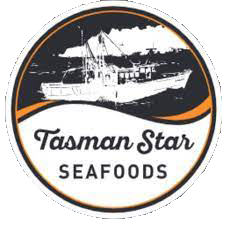Queensland summer rewards quick seafood trips and long afternoons outdoors, but the heat demands care. Safe storage is simple if you follow temperature control, pack your esky correctly, and plan fridge time. These steps protect flavour from best fish market Gold Coast and keep your family out of the danger zone.
The cold chain that keeps seafood safe
Food poisoning bacteria grow fastest between 5°C and 60°C. Keep seafood from best fish market near me at or below 5°C whenever you can. If it warms above 5°C, the 2-hour/4-hour rule applies: under 2 hours, return it to the fridge; between 2 and 4 hours, eat it right away; beyond 4 hours, discard it. The time is cumulative across your whole day, including transport and prep. Keep your home fridge between 0°C and 5°C and give it time to recover after loading a big shop.
Buy, pack, and transport with heat in mind
Start cold and stay cold. Shop last at best seafood market gold coast, not first. Use an insulated esky or cooler bag with frozen ice packs or bagged ice. Pre-chill the esky before leaving home, pack seafood straight from the shop’s display ice, and keep the lid shut. Store raw items in sealed containers at the bottom and ready-to-eat items at the top to avoid drips. Place the esky in the air-conditioned part of your car, not the boot. If you collect orders, a chilled esky helps you hold 5°C or below for the drive.
A pocket thermometer earns its keep on a hot day at fresh seafood market Gold Coast. Check the centre of a pack, not the surface. If a reading tips over 5°C, make a plan based on the time already elapsed. Queensland Health reinforces the same boundaries used by national food standards, so the rule travels with you from shop to car to picnic rug.
Esky timings that actually work
Think temperature first, minutes second. In shade with plenty of ice, a well-packed esky can hold seafood from wholesale fish market gold coast prices at or below 5°C for hours. Heat, sun, frequent opening, and a low ice-to-food ratio shorten that window. Keep the esky closed, top up ice as it melts, and drain meltwater only if it raises the seafood above the ice line. When the internal temperature rises above 5°C, your clock starts. Under 2 hours, get it back on ice or into the fridge. Between 2 and 4 hours, serve it. After 4 hours, bin it.
Quick guide
| Situation | What to do |
|---|---|
| Seafood stays ≤ 5°C on ice | Safe to hold, then refrigerate on arrival. |
| Warms above 5°C for < 2 hours | Return to ≤ 5°C or eat soon. |
| Warms above 5°C for 2–4 hours | Eat immediately. Do not re-chill. |
| Warms above 5°C for > 4 hours | Discard. |
Fridge storage at home
Seafood from best wholesale fish market gold coast keeps best in the coldest part of the fridge. Aim for 0–5°C, use shallow containers, and cover to prevent odours. Most fresh seafood will hold for 2 to 3 days when stored correctly. Prawns and other crustaceans should be left in the shell until just before serving. If your fridge has warm spots after a big shop, spread items so cold air can circulate and let the unit recover.
For day-of serving, resting fish on a tray of ice set inside the fridge keeps the core colder and the texture firm. Replace the ice as it melts and keep the fish clear of meltwater. This simple step buys quality without changing the food safety rules already described.
Freezing and thawing without losing quality
Freeze seafood from wholesale fish market near me you won’t use within a couple of days. Target −18°C, wrap tightly with minimal air, and label the date. Thaw in the fridge, not on the bench, and keep raw and ready-to-eat foods separate during thawing. If prawns have been previously frozen and thawed by the retailer, use them promptly and avoid refreezing to preserve quality.
Common summer mistakes to avoid
- Warm transport: leaving seafood in a hot car while running more errands. Plan pickups last and bring an esky.
- Overloading the esky: too little ice for the volume of food and drinks. Pre-freeze some water bottles to lift the cold mass and reduce melt.
- Lid up, temp up: frequent opening wrecks the chill. Group items and keep a separate drinks cooler so people are not fishing around the seafood.
- Bench thawing: seafood on the counter invites rapid bacterial growth. Thaw in the fridge.
Planning pays off
All in all, summer crowds, traffic, and long beach days put pressure on the clock. A bit of planning stops the rush. Check your fridge temperature the night before. Freeze ice packs. Pack sealed containers. Bring paper towel and a spare bag for ice refills. Follow the time and temperature rules confidently and you can focus on the meal, not the worry.
When the weather spikes, focus on the basics: stay under 5°C, use the 2-hour/4-hour rule when you cannot, and keep seafood cold from counter to table. Do that, and summer seafood stays both safe and delicious.

